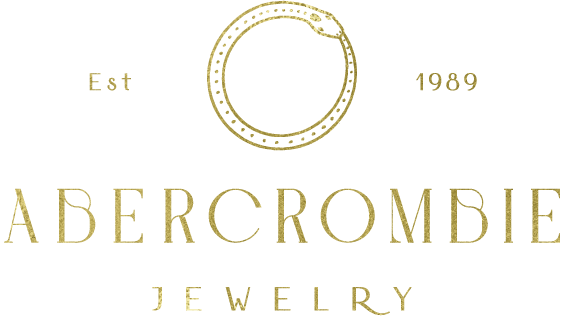Jewelry has been a part of human culture for centuries, symbolizing love and commitment in marriage and marking special occasions. But who are the people buying jewelry today? What drives their decisions when making such a necessary purchase?
Unsurprisingly, emotions play a significant role in why people purchase jewelry – it often serves as a token of love or friendship. But what other factors contribute to someone’s decision to buy?
This article aims to uncover critical insights into the mindsets of those buying jewelry so businesses can better understand their customers’ needs and create tailored products that cater to them. By analyzing customer data and consumer behavior research, readers can gain valuable insight into what makes up today’s jewelry buyers.
Jewelry Buyers: Who Are They And What Drives Them?
Jewelry enthusiasts emanate from diverse backgrounds, yet they share fundamental traits that unite them. They usually seek something special and unique to express themselves or commemorate a moment. Individuals who make jewelry purchases often demonstrate discernment for superior artistry and may be inclined to allocate more excellent financial resources towards acquisitions of rare metals or gemstones.
Many jewelry buyers also consider the emotional value of their purchase. Whether individuals buy a gift for another or indulge in a personal treat, they seek assurance that their purchase bears significance. When deciding, they might look at the design elements, materials used, and even the story behind each piece.
Despite certain factors influencing our buying decisions regarding jewelry, many underlying psychological factors must be considered. These factors are only sometimes apparent; understanding them can significantly enhance the decision-making process when purchasing jewelry. Knowing the psychology behind our jewelry purchases can lead to more informed and beneficial choices.
Understanding The Psychology Of Jewelry Buying
Jewelry buying is intriguing. An item’s visual appeal is not the sole determining factor in its value. A comprehensive understanding of the psychological motivations behind an individual’s decision to acquire it is equally critical. To maximize your reach and attract more jewelry buyers, it’s essential to understand what drives them to make choices.
One major factor that influences jewelry purchases is emotion. Many people buy pieces as gifts for themselves or others out of love or appreciation, while others use jewelry as a form of self-expression. Jewelry can also be used as a symbol of success, status, and identity; by wearing certain pieces, individuals often feel they have achieved something special and want to show their accomplishments with pride.
The symbolism associated with different types of jewelry can also affect purchasing decisions. For example, rings are often seen as symbols of commitment – engagement rings in particular – so couples may invest extra time and money into choosing these pieces carefully to ensure they find exactly what they are looking for without compromising on quality or sentimentality.
Understanding the underlying motivations behind why people buy jewelry helps us develop effective marketing strategies targeted at specific audiences who might be interested in our products and services. With this knowledge, we can focus on creating content that resonates with potential customers to increase our chances for success when reaching out to them directly through advertising campaigns or other promotional activities.
Maximizing Your Reach To Reach More Jewelry Buyers
Reaching jewelry buyers is critical to success in the jewelry industry. Knowing who they are and how to reach them can be challenging, but when you do, you’ll maximize your potential for success. So, let’s explore how to ensure you’re reaching as many valuable customers as possible.
It’s essential to understand who these buyers are. Jewelry buyers tend to be high-income individuals who appreciate luxury items like fine jewelry and watches. They often have a penchant for quality craftsmanship and appreciate the finer details that come with expensive jewelry. They may also enjoy wearing their purchases.
Now that you know your target audience better, let’s look at ways to get our message across effectively so we can start selling more jewelry pieces. One way is through digital marketing – this includes everything from SEO optimization and social media campaigns to email newsletters targeting specific demographics or interests related to your products or services. Another option is traditional advertising methods such as television commercials or radio spots. Although these might cost more upfront than digital options, they allow you to reach larger audiences quickly, which could result in higher sales numbers over time if done correctly. Finally, having a strong presence at events related to fashion or luxury items could help attract interested buyers looking for something special among all the other offerings available there too!
By understanding our target customer demographic better and employing effective strategies tailored towards them specifically (digital marketing strategies plus traditional advertising approaches), you’ll ensure you maximize your chances of reaching those most likely interested in buying beautiful pieces of fine jewelry.
Jewelry buyers are a diverse and complex group of people. From understanding their psychology to maximizing your reach, there is much to consider when marketing jewelry.
Jewelry buying is an emotional process for many people, so it’s important to remember when creating campaigns or strategies to reach them. It’s also helpful to recognize the power of visuals and storytelling when connecting with potential buyers – both can be powerful tools for making lasting impressions and inspiring action.
Looking for successful engagement with potential jewelry buyers is this: Get creative! Think outside the box and find unique ways to connect with customers through engaging visual content, compelling stories, and personal touches demonstrating your commitment to providing outstanding products and services. Doing so will help ensure you capture attention while building relationships far beyond a single purchase.
